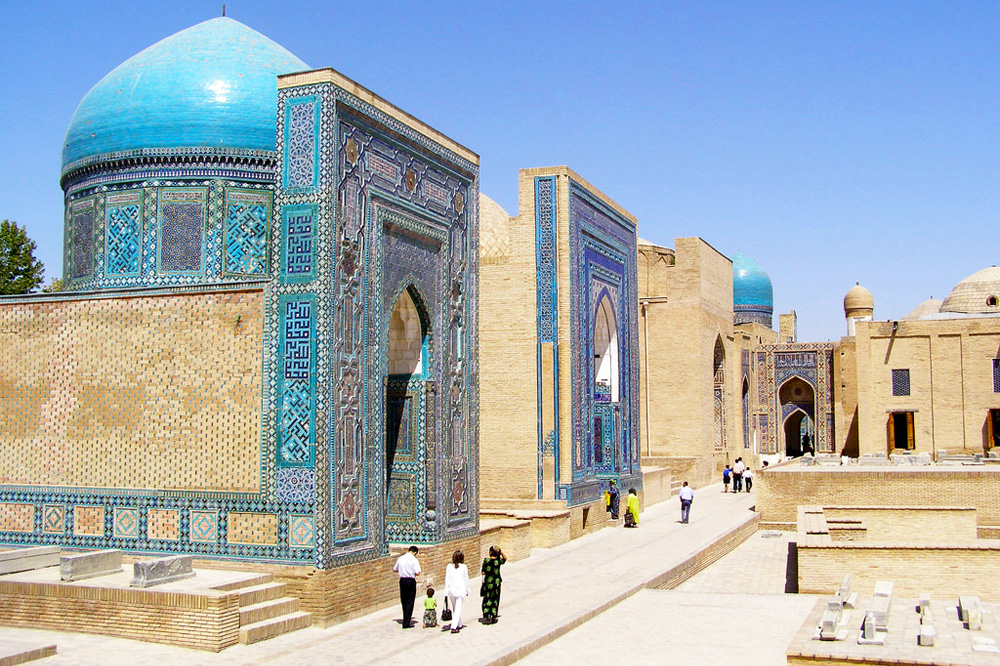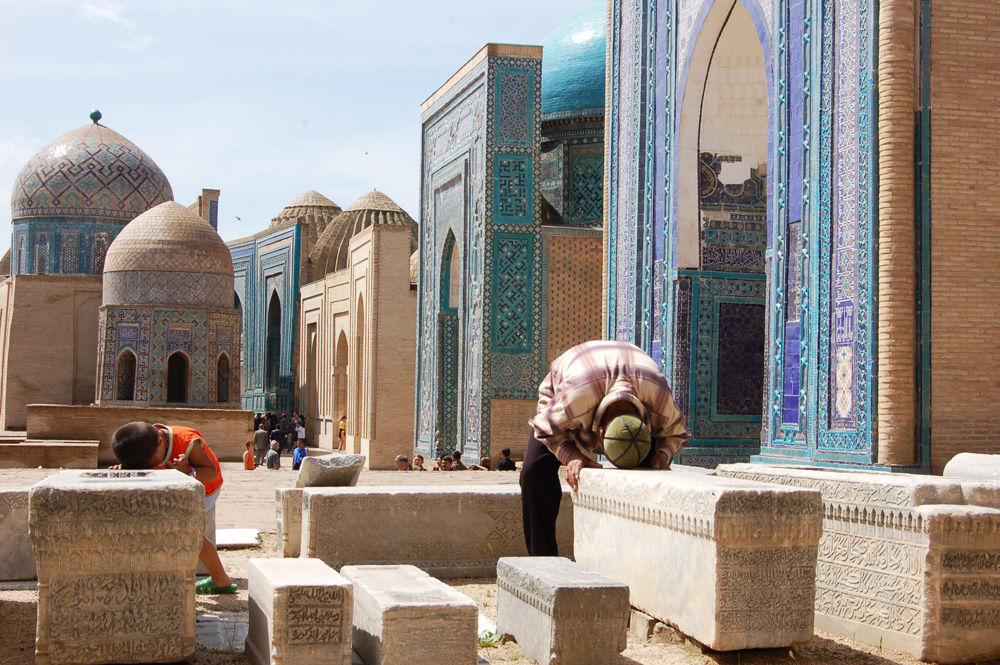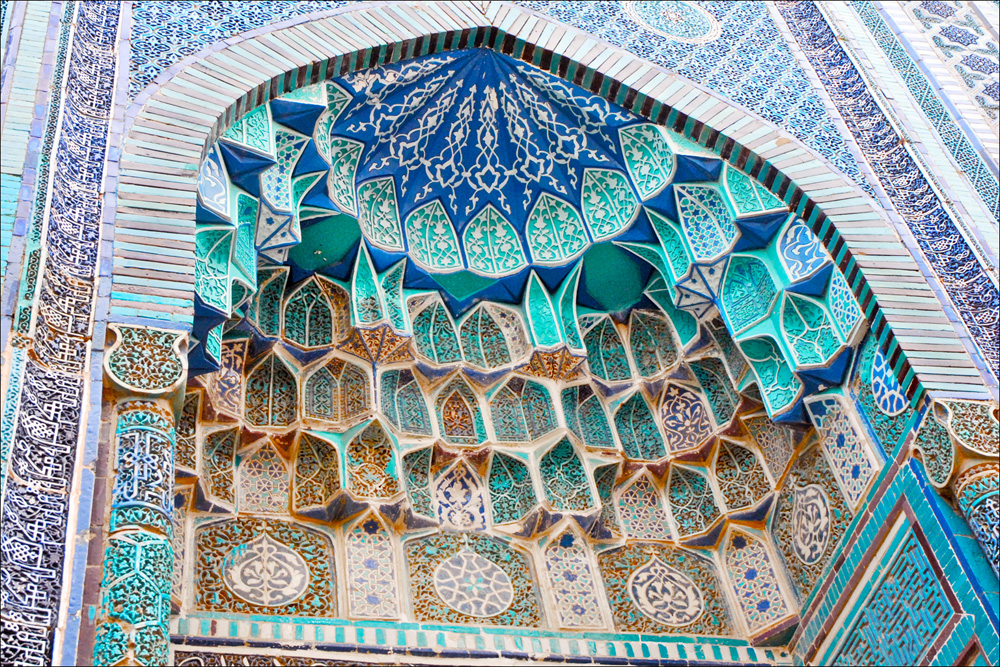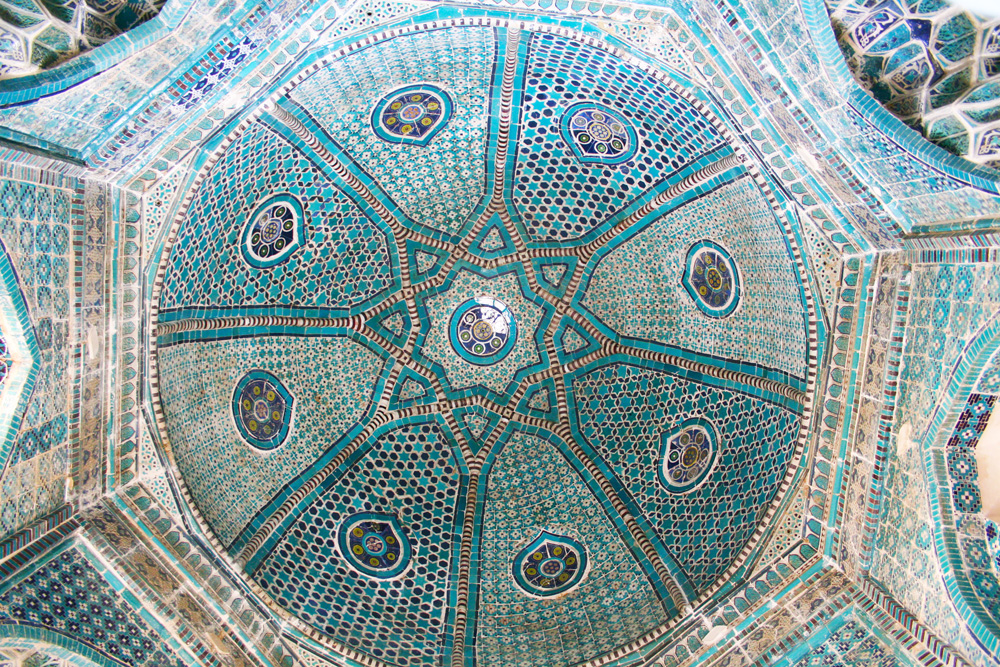
In addition to being an important pilgrimage centre, Shah-i-Zinda is home to some of the most incredible mosaic, majolica and terracotta work in the Muslim world, with the most stunning Timurid-era tilework from the 14th and 15th centuries. The funerary complex in the northeastern part of Samarkand, Uzbekistan, is also a fascinating way to see a cross-reference of different architectural styles, methods and decorative craftsmanship changing throughout different centuries.

The complex is an important centre for pilgrims as according to the myth, the prophet Muhammad’s cousin Kusam ibn Abbas was buried there. In Persian, Shakhi Zinda means ‘The Living King’, a connection to Kusam ibn Abbas, who is said to have preached Islam in the area in the 7th century. Legend has it that he was beheaded for his faith, but he took his head and went into the deep well (Garden of Paradise), where he's still living now.

The Kusam-ibn-Abbas complex, situated in the northeastern part of the ensemble, consists of several buildings, including the most ancient of them, the Kusam-ibn-Abbas mausoleum and mosque (16th century).

Around 20 temples, mausoleums, and ritual buildings were continually added where royals, nobles, and some unknown individuals were buried throughout different centuries (approximately 11th till 19th). You’ll find an interesting, fresh and vibrant multi-tiered design in the necropolis in the south of Afrosiab, where layers of history and architecture intertwine between steps, archways, and dusty paths.

The upper group of buildings in the UNESCO World Heritage Site, where many of the tombs were restored in 2005, includes the Khodja-Akhmad Mausoleum. Then there’s the middle group of buildings, where Timur The Great’s relatives were buried near the sanctity of the original shrine.

Thanks to the exquisite majolica and terracotta work with minimal space in between, the most striking tomb is the Shodi Mulk Oko Mausoleum, the resting place Timur built for his sister and niece. The tomb of Timur’s wife, Tumanaga, features terracotta-based tiles, which were painted in blue-green or blue-grey prior to being glazed and fired. Ulugbek also buried his family and favourites here. In the lower lower group of buildings, there’s a double-cupola mausoleum devoted to scientist and astronomer Kazi Zade Rumi.


















